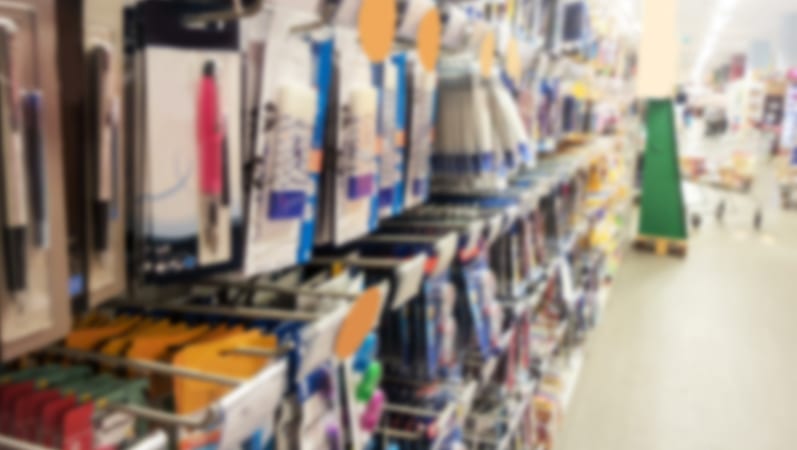Dear Parents,
School supply shopping is no joke, I know. Getting school supplies takes time, a good chunk of change, and, where I teach—a place in which parking lots feel like one billion degrees between the hours of 10 AM and 7 PM—the whole process flirts with being a health hazard. Trust me, I’m not flippant or blasé about asking for your help with supplies.
I also know it’s easy to look at my supply list, a piece of paper which is disconnected from who I am as a person, and feel skepticism or animosity.
I get that you might read my list and think, All this? For middle school English?
I get that it might seem like overkill to specify a college-ruled notebook or Expo brand markers.
I know it’s expensive and that you have multiple kids.
Trust me, I hear you.
And I’m angry, too.
[contextly_auto_sidebar]
There are a few things I think you should know.
The first is this: We don’t have money. In the past decade, education budgets have been slashed at the state and national levels. When districts have less funding, their insurance packages cover less, salaries stay static, and, obviously, schools get less funding. When schools are underfunded, the class sizes increase while the resources—money for technology, supplies, textbooks, everything—slowly dry up. It’s no wonder that every state experienced a teacher shortage last year.
I recently saw a Facebook comment that basically said since mechanics pay for their own tools, teachers should as well.
There’s a few problems with that. One, teachers aren’t the ones using school supplies. So if the analogy were accurate, mechanics would pay for oil, wiper blades, and anything else the customer uses. Try asking your mechanic if they’ll pay for any of that and let me know how hard they laugh at you.
Two, the average teacher salary in the US is less than $39,000.
Let’s take a conservative estimate and say that school supplies per child are $85. If a middle school teacher with 125 students (again, a conservative estimate) is expected to pay for their students’ supplies, we’re asking teachers to shell out more than a quarter of their salary before taxes on supplies for their students. We already spend an average of $500 per year on classroom supplies—this is with parents’ help.
Further, we wouldn’t have such specific lists if they didn’t actually matter for your child.
Expo markers not only last longer than other brands, they appear darker on the boards than other brands, meaning it’s easier for your child to read, especially if they sit farther away or have problems seeing. If we ask students to write an essay on a page in their journal and your child is the only one in the class with a wide-ruled notebook, guess who has less space to practice, prove their thinking, and develop their ideas? Of course we can and do make exceptions when the kinds of supplies we need are unavailable, but if we know something that makes your child’s learning easier and our classroom expectations clearer, why wouldn’t we ask for your help in acquiring it?
Finally, supplies mean so much more than the value of their plastic, wood, canvas, or ink.
I don’t have a single supply on my list that doesn’t have some greater meaning for my students and their success. For example, on my supply list I ask for a single red pen. I ask for this because I conduct a peer-editing writing workshop, modeled after my grad school courses, in which students practice:
- wording criticism for others so that it is constructive and specific;
- being grateful for criticism from others instead of trying to avoid, deflect, or deny it;
- analyzing and evaluating text for structure, diction, flow, tone, and other literary elements and discussing these out loud;
- backing up criticism with text evidence, so that “I don’t like this” becomes “this piece could benefit from a stronger introduction with a variety of sentences”;
- disagreeing with each other with respect and curiosity instead of devolving into reptilian hostility;
- acknowledging that we are made stronger by recognizing our own mistakes.
That’s what that red pen means. And if you’re not sure whether our world needs the kind of education I just mentioned, do me a favor and take a quick scroll through the comment section on any popular or controversial social media post. You’ll see really quickly what I’m talking about.
Parents, let’s join forces.
In the running war over school supplies, remember that it’s not us versus you. After all, we want the same thing: what’s best for your child. The people at fault here are not you or me, there’s a third party we often forget about, a third party who would prefer to be forgotten in the war over school supplies: the people keeping our schools underfunded. The people who say, “Public education is a cornerstone of democracy,” yet will slash education budgets again and again and again. They are the reason for your school supply list.
This year, let’s take a red pen to the idea that we must accept underresourced classrooms, large class sizes, and environments that create teacher shortages. Our children deserve it.


